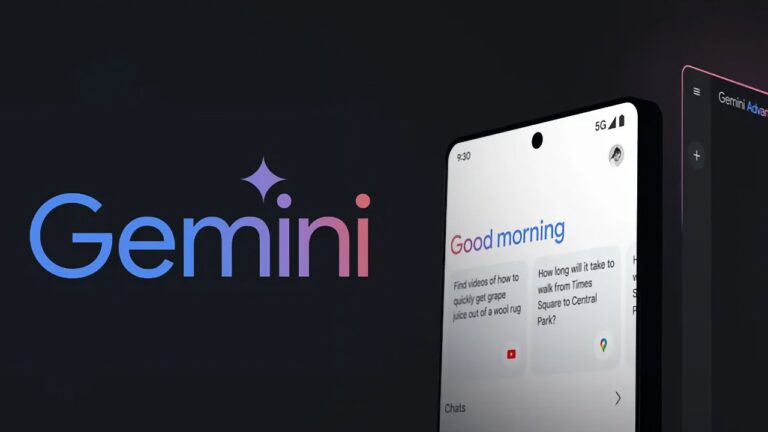
Audience
- Sentiment: Positive
- Political Group: Moderate
- Age Group: 18-34
- Gender: All
Overview
- Perplexity launched a new tool called Deep Research that streamlines the research process for professionals and students.
- Deep Research provides detailed, citation-rich answers while maintaining user accessibility with both free and subscription options.
- The tool promises to enhance productivity by delivering comprehensive reports quickly, allowing users to focus on analysis rather than fact-finding.
Unlocking the Future of Research: Perplexity’s New Deep Research Tool
Imagine you’re a detective on a mission. You need to find specific pieces of information, analyze them, and put the pieces together to solve a case. Now, picture a powerful assistant who can sift through mountains of data, highlight the most important facts, and help you present everything cleanly and clearly. This scenario is precisely where the new tool called Deep Research, developed by a company named Perplexity, comes into play. Launched as part of a wave of advancements in artificial intelligence (AI), Deep Research aims to revolutionize how professional research is conducted, making it simpler, faster, and potentially more effective.
What is Deep Research?
Deep Research is an advanced feature launched by Perplexity designed to pull together detailed and citation-rich answers that can assist professionals in various fields, from finance to marketing. Similar to tools from AI giants like Google and OpenAI, Perplexity’s Deep Research offers something more substantial than the average chatbot. Instead of just answering questions with simple yes or no replies, Deep Research digs deeper, sourcing information from credible references and providing context, all wrapped up in a neat package that’s easy to understand and use.
Why is This Important?
In today’s fast-paced world, professionals need answers quicker than ever. Gone are the days of sifting through stacks of books or endless websites to find the information you need. As high school students, we often experience this when we’re assigned a research project. With the internet flooded with information, it can be overwhelming to figure out where to even start. Perplexity’s Deep Research tool aims to solve that problem not just for students, but for anyone who needs detailed information for their work.
Think about it: if you’re working on a school project about climate change, you could select Deep Research, type in your question, and receive a comprehensive report filled with facts, figures, and sources—all within a few minutes. That’s not just helpful; it’s transformative.
The Competition
Deep Research isn’t alone in the race to revolutionize research. Other tech giants like Google and OpenAI have developed their tools to help users uncover detailed insights quickly. For example, OpenAI’s chatbot, which has received significant attention for its remarkable ability to converse like a human, comes with a price tag. Users must pay for a subscription to access its advanced features. In contrast, Perplexity aims to provide greater accessibility. While it does offer a subscription that allows for unlimited use, there is also a free tier, allowing users to dip their toes into the world of AI research without spending a dime.
This strategy places Perplexity in a unique position. It targets not just seasoned professionals but also students and casual users who may be looking for reliable information without breaking the bank.
How Does Deep Research Work?
So, how exactly does Deep Research work? The operation is relatively straightforward. When users want to conduct research, they can select the Deep Research option from a menu on Perplexity’s website. After entering their query, the tool generates a detailed report that is not just a collection of facts but includes cited sources where the information was obtained.
The tool’s ability to provide citation-rich responses shows that it’s not just pulling information out of thin air. Instead, it’s providing a well-researched and well-organized response that mirrors the thoroughness of human researchers. This is significant because it allows users to trust the information they receive, knowing it’s backed by reliable references.
As far as performance goes, Deep Research has demonstrated impressive reasoning skills. When subjected to performance benchmarks, it scored 21.1%, which, while not the highest, is commendable and shows substantial promise. To put that into perspective, OpenAI’s tool scored slightly higher at 26.6%. However, the important takeaway is how these tools are striving to become more and more refined. They’re constantly being updated and improved, so what we see today may evolve significantly in the near future.
Speed Matters
One of the most attractive features of Perplexity’s Deep Research is its speed. In under three minutes, users can receive detailed results that would typically take hours of searching and compiling. In a world where deadlines loom, and the pressure to deliver is constant, having such a quick research solution can be a game-changer.
Navigating the Future of Research
As these AI-powered tools become more integrated into our lives, a discussion around their impact on traditional research methodologies is essential. On one hand, these tools can enhance productivity and allow users to focus on analysis and critical thinking instead of getting bogged down in fact-finding missions. On the other hand, there are concerns that an over-reliance on automated systems could stifle creativity and original thought.
Think about it this way: when you have an AI doing the heavy lifting for you, there’s a risk that you might not develop the same research skills you would if you had to rely solely on yourself. It’s a bit like relying on a calculator for every math problem. While calculative tools are helpful, it’s equally vital to understand the process behind arriving at those answers.
The Classroom and Beyond
So, how might Deep Research impact students like you? Imagine being able to craft a research paper with fully cited sources in record time. You could focus on ideas, arguments, and discussions instead of grappling with the tedious act of finding credible sources. This could lead to more in-depth and meaningful conversations in classrooms as students have more time to engage with each other’s ideas rather than just the facts.
Furthermore, this could change how we view and interact with knowledge itself. Instead of memorizing facts, students might begin to think critically about how to use information to develop new insights or solve problems creatively.
Thoughts for Discussion
As we move forward into a future intertwined with AI, we must consider our relationship with these tools. While they can provide immense support, we should aim to strike a balance between utilizing technology and nurturing our curiosity and creativity.
What do you think? Are tools like Deep Research a blessing or a potential crutch? How do you feel about relying on AI for your research? I’d love to hear your thoughts in the comments below! 💬






